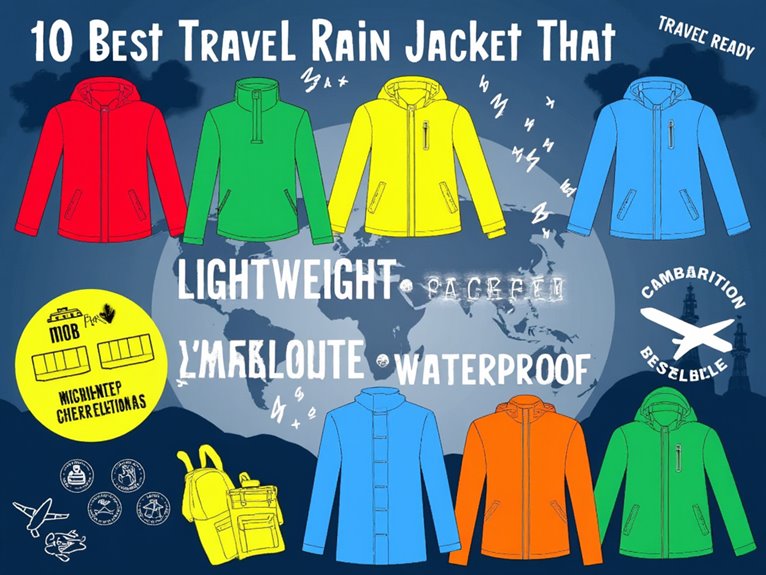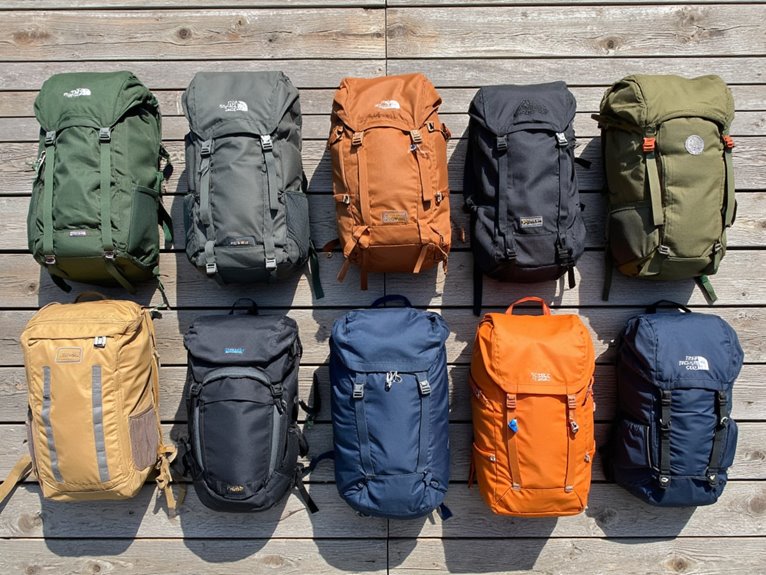Is It Okay to Hike in Nike Shoes?
While Nike shoes can be comfortable and familiar, they often lack the essential features and support needed for a safe and enjoyable hiking experience, particularly on rugged terrain. For day hikes on well-maintained trails, Nike shoes might suffice, but for more challenging excursions, hiking boots are the better choice. Ankle support, traction, and water resistance are vital considerations when selecting footwear for hiking. As you prepare for your next adventure, it's essential to weigh the demands of the hike against the capabilities of your footwear, and consider whether Nike shoes are truly up to the task.
We are supported by our audience. When you purchase through links on our site, we may earn an affiliate commission, at no extra cost for you. Learn more. Last update on 26th December 2025 / Images from Amazon Product Advertising API.
Nike Shoes Vs Hiking Boots
In the domain of outdoor adventure, many hikers are faced with the dilemma of whether to lace up their Nike shoes or invest in a sturdy pair of hiking boots.
While Nike shoes may be comfortable and familiar, they often lack the essential features required for a safe and enjoyable hiking experience.
Hiking boots, on the other hand, provide superior ankle support, protection from the elements, and durability on rugged terrain.
For day hikes on well-maintained trails, Nike shoes might suffice, but for more challenging excursions, hiking boots are the better choice.
It's essential to weigh the demands of your hike against the capabilities of your footwear to guarantee a successful and injury-free adventure.
Traction and Grip on Trails
When hiking in Nike shoes, the variability of trail surfaces poses a significant challenge to maintaining traction and grip.
From smooth dirt paths to rocky terrain, each surface type demands a specific response from the shoe's sole to maintain stability and control.
In this section, we'll examine the unique demands of rocky terrain and delve into how Nike shoes perform in these conditions.
Trail Surface Variety
On uneven trails, where roots, rocks, and slippery leaves conspire against hikers, Nike shoes must deliver reliable traction to keep adventurers upright and moving forward.
The variety of trail surfaces demands adaptability from hiking footwear.
Dirt and gravel paths are smooth surfaces that can be deceivingly slippery, especially when wet. Nike shoes need to maintain traction to prevent slipping and sliding.
Rocky and root-covered trails require shoes to grip and flex around obstacles, ensuring hikers can navigate challenging terrain with confidence.
Muddy and leaf-covered trails demand shoes that can dig in and maintain stability, keeping hikers upright and moving forward.
Rocky Terrain Challenge
Rocky terrain presents a unique challenge for Nike shoes, as the jagged, uneven surfaces require a shoe that can simultaneously grip and flex to maintain traction and stability.
The rugged outsoles of Nike shoes can provide decent grip on rocky terrain, but they may not be as aggressive as those found on dedicated hiking boots.
However, Nike shoes often feature advanced traction technology, such as grooved soles and strategically placed lugs, which can help improve grip on uneven surfaces.
While Nike shoes may not be the ideal choice for extremely rocky terrain, they can still perform well on moderately rocky trails.
It's essential to assess the terrain and adjust your pace accordingly to guarantee a safe and enjoyable hike.
Ankle Support and Stability
A sturdy ankle collar, like the one found in Nike's hiking shoes, provides essential lateral support, allowing hikers to tackle uneven terrain with confidence.
This is particularly important when navigating rocky or slippery surfaces, where a twisted ankle can quickly become a serious issue. Ankle support is crucial for stability, and a good hiking shoe should provide a snug, secure fit around the ankle.
Reduced risk of ankle sprains: A sturdy ankle collar helps prevent excessive ankle movement, reducing the risk of twists and sprains.
Improved balance and stability: A secure ankle fit helps hikers maintain their balance, even on uneven or slippery terrain.
Increased confidence: With a supportive ankle collar, hikers can focus on the trail ahead, rather than worrying about their ankles.
Water Resistance and Breathability
In addition to ankle support, a good hiking shoe should also protect the foot from the elements, particularly water, which is where Nike's water-resistant and breathable designs come into play.
Nike's water-resistant technology helps keep feet dry in wet conditions, while breathable materials allow for airflow and moisture evaporation.
This combination is essential for hiking, as wet feet can lead to discomfort, blisters, and even infections.
Nike's designs guarantee that your feet remain dry and comfortable, even in damp or rainy conditions.
Moreover, breathable materials help regulate foot temperature, preventing overheating and discomfort.
Trail Conditions and Terrain
Typically, hikers encounter varying trail conditions and terrain, which can substantially impact the overall hiking experience. Whether you're tackling rugged mountain trails or leisurely strolls through the woods, understanding the terrain is crucial for a successful hike.
- Rocky terrain: Jagged rocks and steep inclines can be challenging, even for experienced hikers. Nike shoes may not provide the necessary support or traction in these conditions.
- Muddy trails: Wet and slippery surfaces can be hazardous, and Nike shoes may not offer sufficient grip or water resistance.
- Steep inclines: Hiking uphill or downhill on steep terrain requires shoes with good grip, stability, and ankle support – features that may be lacking in Nike shoes.
When considering hiking in Nike shoes, it's essential to assess the trail conditions and terrain to ensure a safe and enjoyable experience.
Alternative Nike Options for Hiking
While understanding the limitations of Nike shoes on challenging trails is essential, there are alternative Nike options that can better equip hikers for their adventures.
For instance, Nike's ACG (All Conditions Gear) line offers shoes designed for outdoor enthusiasts, providing better traction, stability, and protection.
The Air Zoom Pegasus, another popular option, features a more aggressive tread pattern and responsive cushioning, making it suitable for lighter trails.
Additionally, Nike's hiking boots, such as the Air Zoom Mercurial, offer more substantial ankle support and waterproofing.
These alternatives can provide a better hiking experience for those who prefer Nike footwear.



